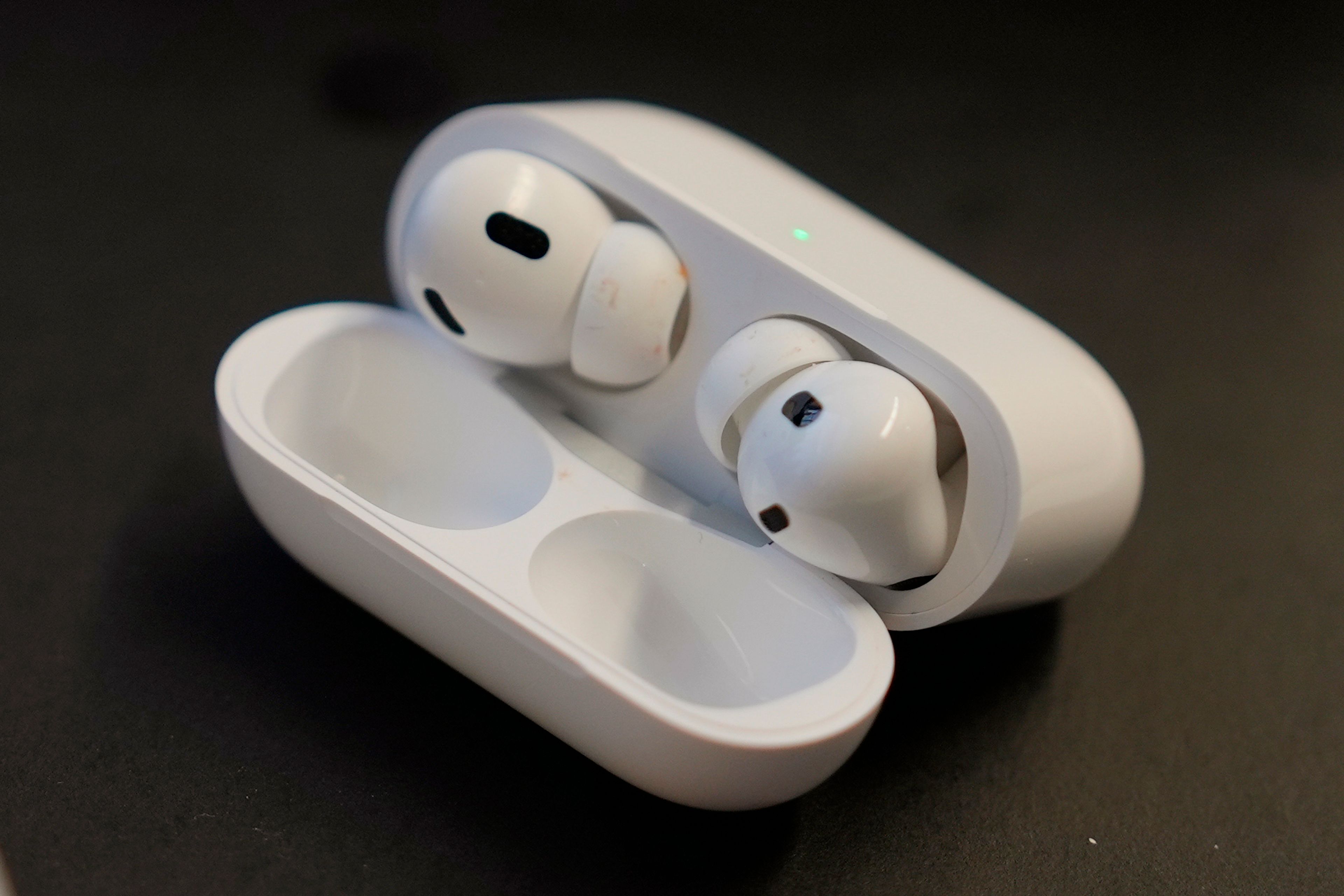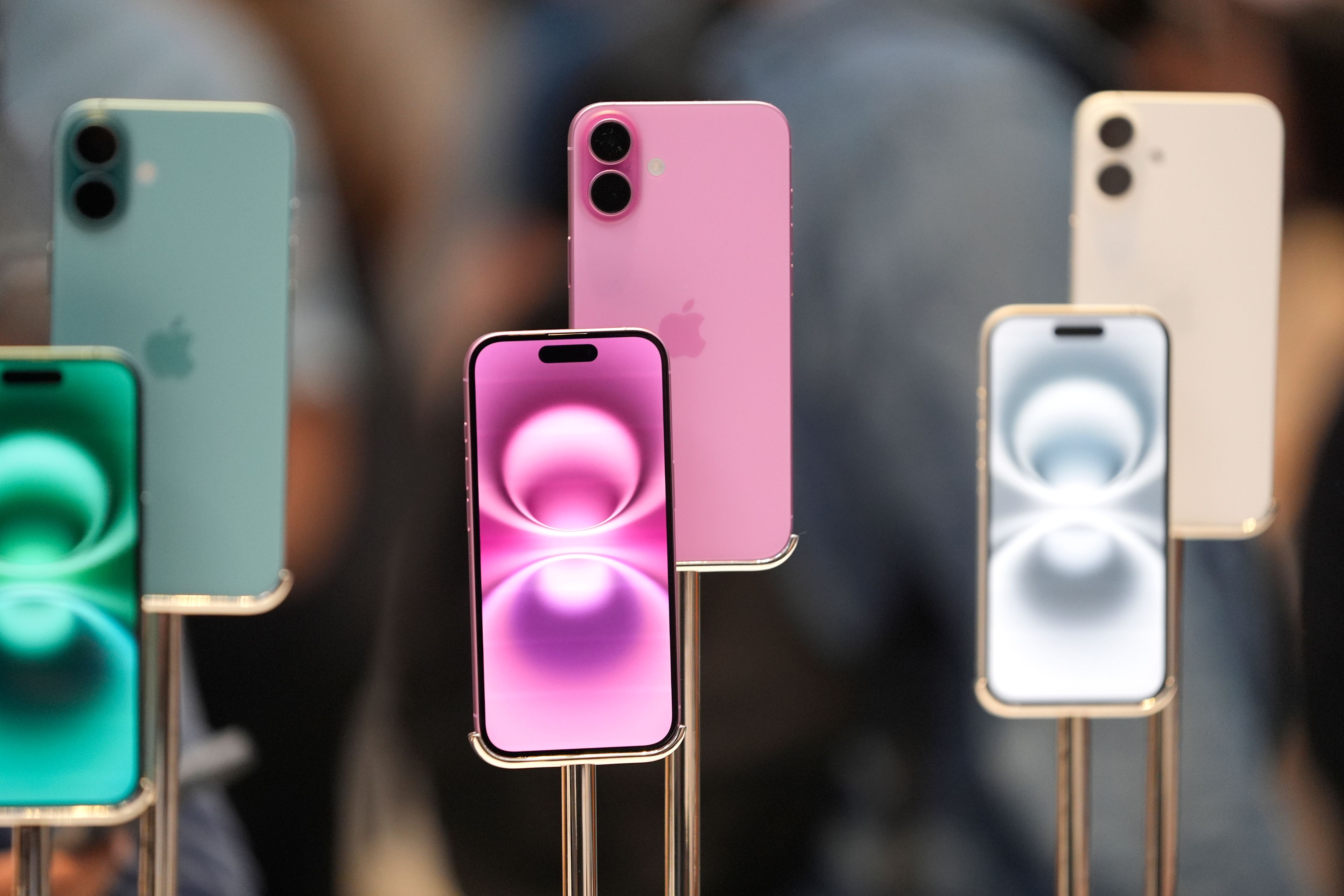Apple AirPods Pro's new hearing aid feature could help people face a problem they'd rather ignore
Apple's AirPods Pro 2 now double as hearing aids with a new update, a move applauded by experts. This feature could help normalize hearing aid use, despite some limitations in fit and battery life.
Some Apple AirPods wireless headphones can be used as hearing aids with a new software update available Monday. It's a high-profile move that experts applaud, even if they only reach a small portion of the millions of Americans with hearing loss.
An estimated 30 million people — 1 in 8 Americans over the age of 12 — have hearing loss in both ears. Millions would benefit from hearing aids but most have never tried them, according to the National Institute on Deafness and Other Communication Disorders. Countless others have tried them, but don't use them because of cost, poor quality, poor fit, how they look or for other reasons.
Over the past few years, there’s been a push to change that. Two years ago, federal rules changed to allow hearing aids to be sold over-the-counter, a move that many hoped would bring better and cheaper options to patients. And last month, the U.S. Food and Drug Administration approved software from Apple that would turn AirPods Pro 2 into hearing aids.
It's unclear yet whether the rule changed has helped, experts say. But turning AirPods into hearing aids is the kind of creative move advocates had hoped for. Here's what to know about hearing loss, hearing aids, and Apple’s new option.
Hearing loss can contribute to isolation, dementia, even fall risk
About 15% of Americans report some difficulty hearing. Most people with hearing loss are over 60, but hearing problems don't only affect older people. One study found men and people living in rural areas are more likely to have hearing loss.
And it has been linked to many health effects beyond the ear. It contributes to isolation, depression and cognitive decline, experts say. It raises dementia risk and rewires the brain. It's also been linked to an increased risk of falls — a major health concern among older adults.
“Everything we do, all our relationships, whether it’s personal or in our work life, involve hearing conversation,” said Barbara Kelley, executive director of Hearing Loss Association of America. “We’re finding now that the sooner that people can pay attention to their hearing health, the better.”
You don't need to see a doctor to get a hearing aid
Before the 2022 rule change by the U.S. Food and Drug Administration, everyone had to see a doctor and get a prescription for a hearing aid to get one. Now, they're available without one.
“As more of them are sold, then hopefully the price will go down,” said Elizabeth Stangl, an audiologist at the University of Iowa. “But we haven’t seen a big rush to get them.”
Even buying over-the-counter, a decent hearing aid can easily run you $400 to $500, said Stangl, who researches how well people adjust to using hearing aids. And some of the less expensive options are really just “cheap amplifiers," lacking the personalized level settings and noise canceling features that really make hearing aids helpful.
How does the Apple AirPods hearing aid feature work?
The hearing aid feature is available with AirPods Pro 2 models, and requires an iPhone or iPad to set it up. It starts with built-in tests that will help users determine if they have hearing loss, set up the feature if they do, and set personalized amplification levels.
The headphones sell for $249 on Apple's website, and sometimes less from other retailers.
While there are many other earbud-type devices that can function the same way, experts agreed that the AirPods addition is a good one, simply because of the way it could help normalize hearing aids.
“It’s just mainstream,” Kelley said. The ubiquity of AirPods could make people worried about the look of a hearing aid more open to using them.
There may be some drawbacks, though. Fit and comfort during long use might be an issue. And while other hearing aids are built to last through a whole day or more, Stangl said the battery life of the AirPods won't allow for that. She also noted that wearing earbuds can send a message to others that the person doesn't want to be disturbed or spoken to.
"But we’re hoping that more people will try it and realize, ‘Yeah, these do help,’” she said.
Tips for buying OTC hearing aids
Stangl suggests people do plenty of research before buying. She said Facebook and Reddit forums can be especially helpful in vetting devices. The websites Hearing Tracker and Soundly also have reliable reviews and resources for selecting a hearing aid, she said.
The Hearing Loss Association of America and American Academy of Audiology have guides to buying a hearing aid at their websites. If you are stuck, consult an audiologist.
Look for devices that allow you to adjust different pitches. Most people with hearing loss have the hardest time hearing higher pitches, so find a device that can adjust amplification across frequencies.
To avoid the piercing whistle of feedback, buy a device that has a “feedback manager.” Fit is critical, but beware: it might not necessarily be the one that’s initially the most comfortable, so take your time.
Can you use your FSA or HSA money to buy OTC hearing aids — or even AirPods?
Pre-tax money stashed away in flexible spending accounts or health savings accounts can be used to buy hearing aids, including ones sold over the counter.
Does this mean you can score a new set of AirPods Pro2 with pre-tax money? Experts say it’s a gray area that hasn’t been tested yet, so be wary. You may even need a letter of medical necessity. It’s best to check with an accountant before you try it.
Your smartphone can help you even without hearing aids
Even if you can't afford the latest and greatest tech, your smartphone can be a tool to protect and improve your hearing.
Most phones can now turn speech into text, which can help facilitate conversations. iPhone's “Live Listen” feature turns your phone into an amplifying microphone that can beam your dinner date's voice right to your ear even if you're in a noisy restaurant.
There are also many apps and websites that can help beyond hearing aids. Some apps can vibrate your phone if an alarm is going off or the dog is barking. The University of Iowa gathers training resources through its Resource Center for Auditory Training. Free apps like the World Health Organization's “hearWHO” offer hearing tests and the National Institute for Occupational Safety and Health's Sound Level Meter App lets you measure if noise levels are dangerous.
“The majority of people own smart phones and don’t realize all that their phone can do, including functioning as a good amplifier for people with mild to moderate hearing loss,” said Catherine Palmer, director of audiology at the University of Pittsburgh Medical Center and former president of the American Academy of Audiology. “This has made hearing care accessible to many.”
___
The Associated Press Health and Science Department receives support from the Robert Wood Johnson Foundation. The AP is solely responsible for all content.
Connect with the Southeast Missourian Newsroom:
For corrections to this story or other insights for the editor, click here. To submit a letter to the editor, click here. To learn about the Southeast Missourian’s AI Policy, click here.











